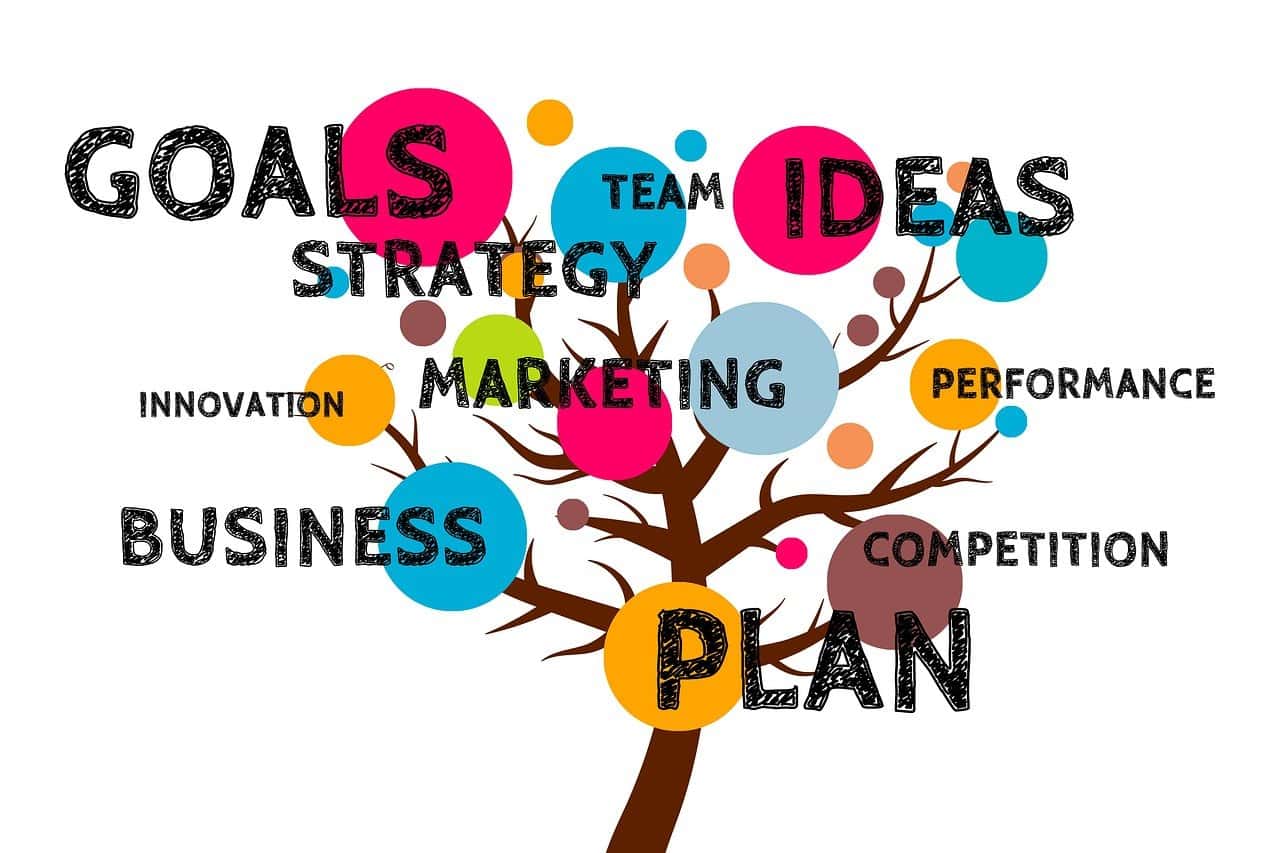An effective business plan serves as a very important document that outlines the strategic roadmap for a company’s success. It is not only essential for entrepreneurs and business owners but also plays a significant role in attracting potential investors and stakeholders.
Disclosure: If you click on my affiliate/advertiser’s links, I am going to receive a tiny commission. AND… Most of the time, you will receive an offer of some kind. It’ s a Win/Win!

Understanding the Importance of an Effective Business Plan
An effective, well-crafted business plan provides a comprehensive overview of the company’s goals, objectives, target market, competitive analysis, financial projections, and marketing strategies. It serves as a roadmap that guides decision-making processes and helps align the entire organization towards achieving its objectives.
Investors often rely on a well-written business plan to evaluate the viability and potential return on investment of a venture. A clear and concise presentation of the company’s vision and growth opportunities can significantly impact their decision to invest.
Further, a well-written business plan helps communicate the value proposition of the company to various stakeholders such as employees, suppliers, partners, and customers. It provides clarity on how the organization plans to differentiate itself in the market and create value for its customers.
Understanding the importance of designing a well-written business plan is vital for any organization seeking long-term success. It not only serves as an internal guide but also acts as an external tool to attract investors and communicate effectively with stakeholders.
Let’s first look at some common mistakes in creating a business plan.
Level-up your career with Udacity's popular School of Data ScienceThe Dos and Don’ts of Writing a Business Plan: Common Mistakes to Avoid
When it comes to writing a business plan, there are certain dos and don’ts that every entrepreneur should keep in mind. Avoiding common mistakes can significantly improve the quality and effectiveness of your business plan.
One of the most common mistakes is neglecting to conduct thorough market research. It is crucial to gather relevant data and insights about your target market, competitors, and industry trends. This information will help you make informed decisions and develop a solid strategy.
Another mistake to avoid is being overly optimistic or unrealistic in your financial projections. While it’s important to demonstrate potential growth and profitability, it’s equally important to be realistic and conservative in your estimates. Investors want to see a well-grounded financial plan that considers potential risks and challenges.
Additionally, failing to clearly define your target audience or differentiate your product or service from competitors can hinder the success of your business plan. It’s essential to have a clear understanding of who your customers are, their needs, and how you can uniquely meet those needs.
Lastly, neglecting proper formatting, grammar errors, or excessive jargon can undermine the professionalism of your business plan. Ensure that your document is well-structured, free from spelling or grammatical mistakes, and easily understandable for readers.
By avoiding these common mistakes and following best practices in business plan writing, you can increase the chances of attracting investors, securing funding, and ultimately achieving success with your venture.
In the following sections, we will explore practical steps to help you define the essential components of your business strategy effectively.
Are you ready to devise your business plan? Then follow these steps:
The Step-by-Step Guide to Writing a Winning Business Plan

Step 1: Conducting In-depth Market Research and Analysis
Conducting in-depth market research and analysis is a crucial first step in any successful business strategy. By thoroughly understanding the market landscape, businesses can identify opportunities, assess competition, and make informed decisions to drive growth and profitability.
Market research involves gathering and analysing data related to target customers, industry trends, and market dynamics. This includes studying consumer behaviour, preferences, and purchasing patterns. Additionally, it involves evaluating competitor strategies, strengths, weaknesses, and market positioning.
Through comprehensive market analysis, businesses can gain insights into customer needs and preferences. This information allows them to develop products or services that align with customer demands. It also enables businesses to identify gaps in the market that they can capitalize on.
Further, conducting thorough market research helps businesses understand their competitive landscape. By assessing competitors’ offerings and strategies, companies can differentiate themselves by offering unique value propositions.
In conclusion, conducting in-depth market research and analysis is an essential step for businesses aiming to achieve success in today’s competitive environment. It provides valuable insights that inform strategic decision-making processes while helping companies stay ahead of the curve.
Step 2: Defining Your Business Concept and Mission Statement
In the early stages of starting a business, it is crucial to define your business concept and mission statement. These two elements serve as the foundation for your entire venture, guiding your decision-making process and setting the tone for your company’s values and goals.
Your business concept refers to the unique idea or proposition that sets your business apart from others in the market. It encompasses your products or services, target audience, competitive advantage, and overall value proposition. By clearly defining your business concept, you can effectively communicate what makes your offering special and why customers should choose you over competitors.
Alongside your business concept, developing a mission statement is equally important. A mission statement articulates the purpose and core values of your company. It serves as a compass that guides strategic decisions while aligning employees and stakeholders around a common vision. A well-crafted mission statement communicates not only what you do but also why you do it – reflecting the passion and commitment behind your business.
Taking time to carefully define both your business concept and mission statement ensures clarity in communicating with potential investors, partners, employees, and customers. It provides a solid framework upon which you can build a successful enterprise that resonates with its target market while staying true to its core values.

Step 3: Outlining Your Products or Services Offerings and Pricing Strategy
In this crucial step, we will go into the process of outlining your products or services offerings and developing an effective pricing strategy. By carefully considering the keywords and understanding your target audience’s needs, you can create a comprehensive plan that aligns with your business objectives.
When outlining your products or services offerings, it is essential to clearly define what you are offering to customers. This includes identifying the core features, benefits, and unique selling points of each product or service. By highlighting these key aspects, you can effectively communicate the value proposition to potential customers.
Additionally, developing a well-thought-out pricing strategy is vital for business success. This involves determining the most appropriate pricing model (e.g., cost-plus pricing, value-based pricing) based on factors such as production costs, market demand, competition analysis, and customer perception of value. A well-defined pricing strategy ensures that your products or services are priced competitively while allowing for profitability.
pricing strategy, you can position your business for success in today’s competitive marketplace.
Step 4: Developing a Comprehensive Marketing and Sales Plan
In order to achieve success in business, it is paramount for organizations to develop a comprehensive marketing and sales plan. This strategic approach allows businesses to effectively promote their products or services, reach their target audience, and ultimately drive revenue growth.
Developing a comprehensive marketing and sales plan involves several key steps. Firstly, it is important to conduct thorough market research to gain insights into the industry landscape, customer preferences, and competitor strategies. This information serves as the foundation for developing targeted marketing campaigns and sales strategies.
Next, businesses should define their target audience by identifying specific demographics, psychographics, and buying behaviours. By understanding the needs and wants of their ideal customers, organizations can tailor their marketing messages and sales tactics accordingly.
Further, businesses must establish clear marketing objectives that align with overall business goals. These objectives should be specific, measurable, achievable, relevant, and time-bound (SMART). They provide a roadmap for guiding marketing efforts towards desired outcomes.
Once objectives are defined, businesses can proceed with developing an integrated marketing mix that includes various channels such as advertising, public relations, digital marketing, social media campaigns etc. Each channel should be carefully selected based on its effectiveness in reaching the target audience.
In addition to marketing activities, organizations must also develop a robust sales strategy that outlines how they will convert leads into customers. This may involve implementing effective lead generation techniques such as cold calling or email outreach campaigns. It also includes designing a structured sales process that guides prospects through each stage of the buying journey.
Finally, do not forget to regularly monitor and evaluate the effectiveness of your marketing and sales efforts. This allows you to identify areas of improvement or make necessary adjustments to maximize results.
By following these steps in developing a comprehensive marketing and sales plan, organizations can position themselves for success in today’s competitive marketplace while effectively reaching their target audience and driving revenue growth.
Step 5: Creating an Organizational Structure and Staffing Plan
In order to ensure the smooth functioning and success of any organization, it is crucial to establish a well-defined organizational structure and develop a comprehensive staffing plan. This step plays a pivotal role in determining the allocation of responsibilities, reporting relationships, and overall workforce composition.
Creating an effective organizational structure involves identifying key roles and positions within the organization and establishing clear lines of authority and communication. By defining the hierarchy, departments, teams, and reporting structures, organizations can facilitate efficient decision-making processes and promote effective collaboration among employees.
Simultaneously, developing a robust staffing plan is essential for ensuring that the right individuals with the necessary skills and qualifications are recruited to fill each position within the organization. This includes conducting thorough job analyses to identify job requirements, defining job descriptions that outline responsibilities and expectations, as well as implementing effective recruitment strategies to attract top talent.
By carefully crafting an organizational structure aligned with the goals of the organization and implementing a strategic staffing plan, businesses can enhance productivity, optimize resource allocation, foster employee engagement, and ultimately achieve long-term success.
Step 6: Creating a Financial Projection and Funding Strategy for Your Business
In order to ensure the success and sustainability of your business, it is crucial to develop a comprehensive financial projection and funding strategy. This step will allow you to anticipate future financial needs, make informed decisions, and attract potential investors or lenders.
Crafting a financial projection involves forecasting your business’s revenue, expenses, and cash flow over a specific period of time. By analysing historical data, market trends, and industry benchmarks, you can make reasonable assumptions about your future financial performance. This projection will serve as a roadmap for managing your finances effectively and identifying potential risks or opportunities.
Simultaneously, developing a funding strategy is essential to secure the necessary capital for your business operations. Whether you are seeking external funding from investors or applying for loans from financial institutions, presenting a well-thought-out funding strategy is crucial. It demonstrates your understanding of the financial needs of your business and how you plan to allocate resources.
To develop an effective financial projection and funding strategy, consider factors such as market conditions, competitive landscape, growth projections, operational costs, marketing expenses, and anticipated revenue streams. Conduct thorough research and seek professional advice if needed to ensure accuracy in your projections.
Remember that transparency and credibility are key when presenting your financial projection to potential investors or lenders. Clearly communicate the assumptions made in developing the projections as well as any risks associated with them. This will help build trust in your business’s ability to generate returns on investment.
By taking the time to carefully create a comprehensive financial projection and funding strategy for your business in Step 6 of this process, you will be better equipped to navigate the challenges of managing finances while positioning yourself for growth and success in the long run.
Start an INC for as little as $49 (Plus Government fees) – Lowest Price GuaranteedConclusion: The Power of a Well-Crafted Business Plan in Driving Success
In conclusion, the significance of a well-crafted business plan cannot be overstated in driving success. A meticulously constructed business plan serves as a roadmap for organizations to navigate through the complexities of the business landscape and achieve their goals.
By engaging in strategic planning and carefully outlining objectives, strategies, and tactics, businesses can effectively align their resources towards a common vision. This comprehensive approach enables them to identify potential challenges and opportunities while establishing a clear direction for growth.
A well-crafted business plan also provides businesses with a competitive advantage. It allows them to differentiate themselves from competitors by showcasing their unique value proposition and understanding their target market. Through thorough market research and analysis, companies can identify gaps in the market and develop innovative solutions that meet customer needs.
In addition, a business plan serves as a tool for effective decision-making. It helps entrepreneurs assess risks and rewards associated with various strategies before committing resources. By evaluating different scenarios and considering potential outcomes, businesses can make informed choices that maximize profitability while minimizing risks.
In summary, a well-crafted business plan is an essential component of driving success in today’s competitive and saturated market. It empowers organizations to set clear goals, devise effective strategies, gain a competitive edge, make informed decisions and ultimately achieve sustainable growth.
Investing time and effort into developing a robust business plan is crucial for any aspiring entrepreneur or established company seeking long-term success.
There are no shortcuts. Do not skip this important step when starting, or expanding, your business. In today’s competitive market, this old saying is so true: “By failing to prepare, you are preparing to fail”.

- How Live Shopping Can Skyrocket Your Small Business Sales: The Ultimate Guide to Getting Started
- Turn AI Anxiety into Competitive Advantage: How to Future-Proof Your Workforce for the AI Revolution
- Unlock Profit: Calculate Customer Lifetime Value & Maximize Growth
- Creating a Customer Persona: A Step-by-Step Guide On How To Do It
- Unleashing the Power of Digital Signage: The Best Software to Transform Your Business











